The Fighting Gamecocks 1943-1949/1951-1992
by
Tom Hildreth
All photos © 2007 by their respective photographers
placed on the BRAC closure list, SoWey, as the base was known, closed as a Naval installation in 1997.
This particular squadron's history consists of two distinct periods of service. From 1943 to 1949, the unit served as a distinguished front-line Marine Corps fighter squadron flying Vought F4U Corsairs.
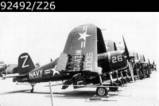
|
FG-1D Corsairs assigned to the Reserves |
The formal 1992 deactivation ceremony was held in Hangar Two at the Navy/Marine Reserve base about twenty miles southeast of Boston. The stand down was held before guests, visiting dignitaries, and the assembled ranks of the unit according to Marine Corps tradition and custom. Executive officer MAJ Richard Ghigna began the ceremony with the Sounding of Attention. Trooping the Line, the unit Commanding Officer accompanied by the Sergeant Major performed a final inspection of squadron personnel.
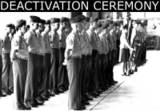
|
Enlisted personnel of VMA-322 stand |
Activated as Marine Fighter Squadron 322 (VMF-322) on 1 July 1943, the unit began flying F4U-lD Corsairs from Parris Island, South Carolina, under the command of MAJ Fred M. Rauschenbach. The squadron underwent extensive combat flight training following its deployment to Hawaii in January, 1944. Based at Espiritu Santo Island in October of that year, the unit became a component of MAG33. Combat orders were soon received, directing the squadron to support the amphibious invasion of Okinawa.
The lead support element sustained heavy casualties on 3 April 1945, when their LST was hit during a Kamikaze attack. Despite this loss, by 9 April the Corsairs were staged at Kadena airfield to begin operations in support of the ground battles on Okinawa and Iheya Shima.
Kanoya airfield on Japan's southernmost island of Kyushu was the target on 12 June 1945, when VMF-322 became the first Marine squadron to carry out an attack on the Japanese home islands. The squadron moved to Awase airfield
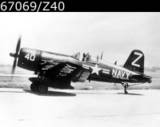
|
Goodyear FG-1D 67069 reportedly |
New F4U-4 Corsairs were taken on strength following a move to Midway Island and assignment to MAG-44 in November, 1945. The next move occurred in July, 1947 when the organization was stationed at MCAS Ewa, Oahu and attached to MAG-15. Tail code "PD" was assigned to the squadron's aircraft during this period. After returning stateside aboard the USS Princeton in April of 1949, VMF-322 was stationed at MCAS Edenton on North Carolina's Albemarle Sound.
The active duty phase of the squadron's history drew to a close with the deactivation of the unit on 30 November 1949. By this time the Marine aviators and squadron ground crew had earned several significant awards including the Presidential Unit Citation Streamer (World War II-1945), the Asiatic-Pacific
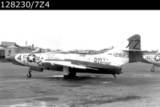
|
The squadron entered the Jet Age |
VMF-322 was reactivated as a Marine Reserve squadron at NAS Squantum, Massachusetts on 6 July 1951. This base was located on a narrow spit of land separating Dorchester Bay from Quincy Bay just south of Boston. Local sources refer to this site as one of the Navy's earliest air stations. As a Reserve base following World War II, Squantum was a busy and crowded place.
During the fifties, Navy and Marine Reserve aviation was structured somewhat differently than it is today. Aircraft were generally assigned to a specific base and bore the tailcode assigned to that base. In the case of NAS Squantum (and later NAS South Weymouth), the
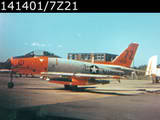
|
North American FJ-3M Fury photo- |
The confined environment of NAS Squantum in a densely populated area, and increased airspace conflicts with Boston's Logan airport, led the Navy to develop plans to utilize the disestablished airship base at South Weymouth, some 12 miles
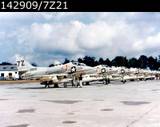
|
The Douglas Skyhawk arrived in |
Moving to the more expansive and renovated base during December 1953, the unit relinquished its familiar piston-engined Corsairs in favor of the Grumman F9F-6 Cougar the following year. First flown in 1951, the Cougar was a swept-wing development of the successful F9F-5 Panther. During this period, the dual ownership of the aircraft was quite visible with many Cougars carrying "NAVY/MARINE" lettering on their fuselages. In May of 1958, the unit's designation
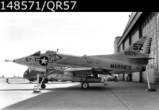
|
A-4C Skyhawk of VMA-322 |
In November 1959 the Cougar was replaced by the North American FJ-3 and FJ-3M Fury, and this type in turn gave way to the Douglas A-4B Skyhawk in September, 1962. The squadron was subsequently equipped with the A-4C, followed by the A-4E, and finally the A-4M model of the diminutive jet. It has been reported that as the Vietnam war escalated, some unit A-4Bs were recalled to for use with active duty forces, and A-4A Skyhawks were subsituted in their place. Unit tail code during this era progressed from "Z" to 7Z. Around the time of the big USN/USMC Reserve aviation reorganization of 1970, the tailcode was changed to "5Z" to denote that the unit was a USMC resource.
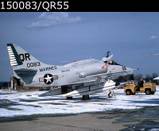
|
A-4E on the cold VMA-322 |
Unit Members took great pride in the organization's record of accomplishments while operating under the control of the Fourth Marine Aircraft Wing. Many deployments to U.S. and Canadian bases helped to hone the skills which earned the Fighting Gamecocks their place in the Light Attack Community. It is a place they occupied with skill and professionalism for forty-one years.
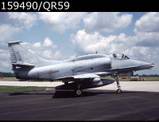
|
A-4M at London, Ontario |
THE END
SPECIAL THANKS to LTCOL Dan Ventre, Commanding Officer VMA322, and MAJ Richard Ghigna for their time and support in the preparation of this article. Assistance with Photographic and historical research was provided by Tom Cuddy, Paul Larcom, Lionel Paul,Jim Sullivan, Larry Webster and John Yaney.
All photos by the author unless otherwise noted.
| HOME |
| EMAIL WEBLACKEY |